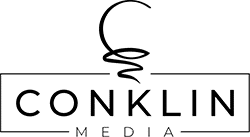The awnings industry serves as a critical indicator of broader economic trends in construction, renovation, and sustainable building practices. Understanding the market size of awnings not only provides valuable insights into consumer preferences for energy-efficient solutions but also reflects evolving architectural designs and environmental consciousness in both residential and commercial sectors. What is the current size of the awnings market, and how is it projected to evolve in the coming years?
The global awnings market size is USD 10.1 billion in 2024, and it is projected to grow at a CAGR of 5.31% from 2025 to 2033 1.
While this figure provides a clear snapshot of the current market size, readers should continue reading to understand the crucial regional variations and market segments that could significantly impact their specific interests in the awnings industry. Different geographical markets and product categories show varying growth rates and market dynamics, making a deeper understanding essential for informed decision-making.
Regional Market Size Variations In The Global Awnings Industry
The North American market, particularly the United States, represents approximately 35% of the global awnings market, driven by high residential adoption rates and stringent energy efficiency regulations. Europe follows closely, with countries like Germany, France, and Italy showing significant market share due to their strong outdoor dining culture and historical architectural preferences for external shading solutions.
Asia-Pacific demonstrates the fastest growth rate, with China and India leading the expansion due to rapid urbanization and increasing disposable income. The Middle East shows particular interest in retractable awnings due to extreme weather conditions, while Latin America’s market remains relatively untapped but shows promising growth potential.
Which Market Segments Drive Awning Sales?
Retractable awnings dominate the market with approximately 45% share, owing to their versatility and ease of use. Fixed awnings follow at 30%, primarily serving commercial establishments and traditional architectural applications. The remaining market share is split between freestanding awnings, pergola systems, and specialized solutions.
Commercial applications, including restaurants, hotels, and retail establishments, account for roughly 60% of total sales. Residential applications make up the remaining 40%, with growing interest in motorized and smart awning systems reflecting broader home automation trends.
How Are Technological Advancements Shaping The Awnings Market?
Smart awnings with automated controls and weather sensors represent the fastest-growing segment, with an estimated CAGR of 7.2% through 2033. Integration with home automation systems and mobile applications has created new market opportunities, particularly in premium residential segments.
Materials technology has also evolved significantly, with new fabric compositions offering enhanced durability, UV protection, and weather resistance. Solar-powered mechanisms and energy-efficient designs are gaining traction, especially in regions with strong environmental regulations and sustainability initiatives. These technological improvements have contributed to higher average unit prices and improved profit margins for manufacturers and installers.
What Role Does Sustainability Play In Awning Market Growth?
Environmental consciousness has become a significant driver in the awnings market, with sustainability-focused products showing 15-20% higher growth rates compared to traditional options. Energy efficiency benefits, particularly in reducing cooling costs during summer months, have become a primary selling point for both residential and commercial customers.
Manufacturers are increasingly adopting recycled materials and eco-friendly production processes, with several leading companies pledging to achieve carbon neutrality by 2030. The development of biodegradable fabrics and sustainably sourced materials has created a premium segment within the market, particularly appealing to environmentally conscious consumers and businesses seeking LEED certification.
How Do Economic Factors And Construction Trends Impact The Awnings Market?
The awnings market demonstrates strong correlation with both new construction activity and renovation/remodeling trends. During economic downturns, the market typically sees a shift toward maintenance and replacement rather than new installations, though this pattern varies by region and market segment.
Rising energy costs have paradoxically benefited the industry, as businesses and homeowners increasingly view awnings as a long-term investment in energy efficiency. The post-pandemic emphasis on outdoor spaces has also driven growth, particularly in the commercial sector where restaurants and hotels have expanded their outdoor seating capabilities. Construction industry labor shortages have led to increased installation costs, pushing some manufacturers to develop more user-friendly, DIY-oriented products to maintain market accessibility across different price points.
Sources
- https://www.imarcgroup.com/awning-market









